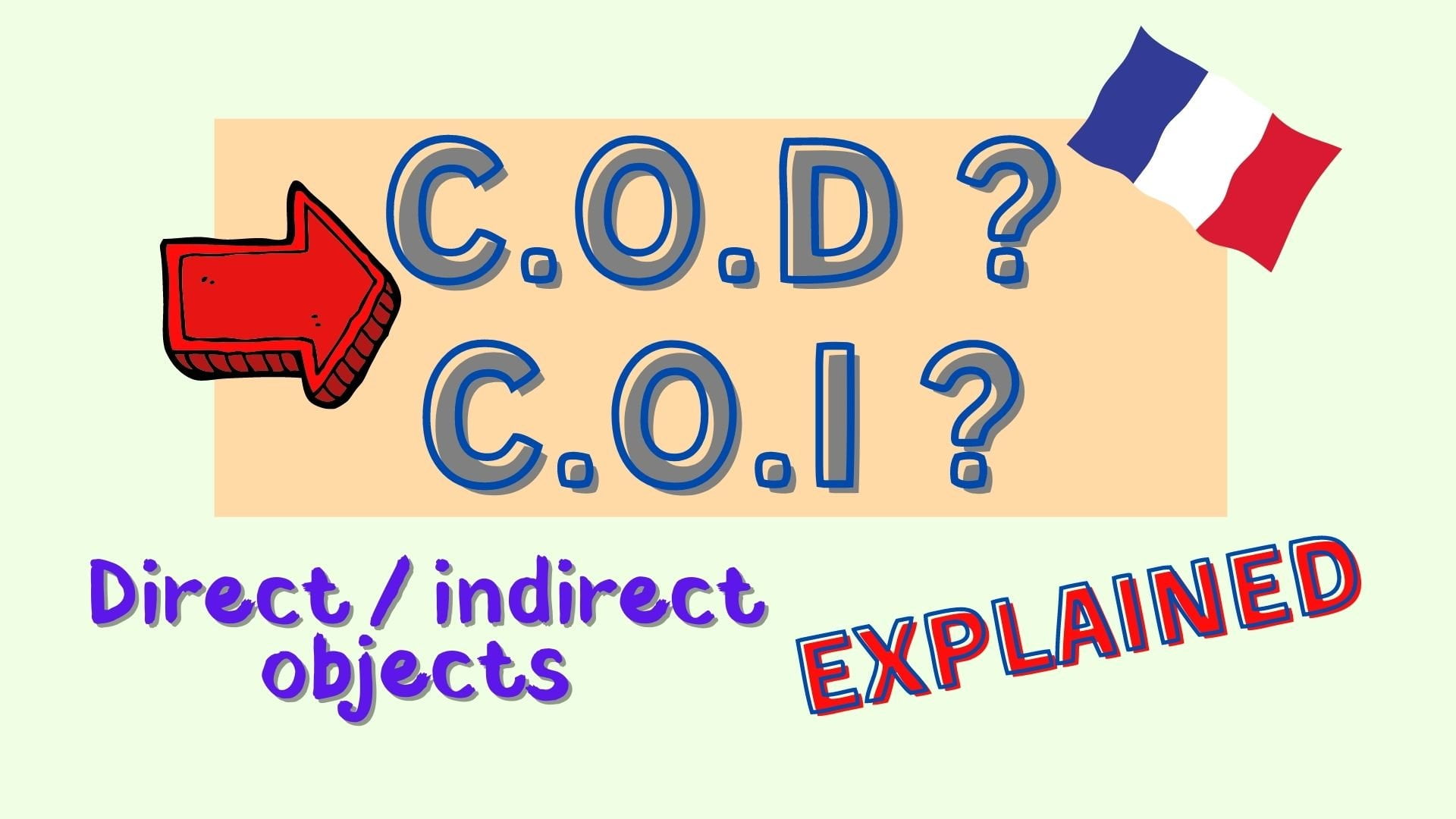Bonjour à toutes et à tous ! In today’s lesson, I will be explaining the COD and COI in French, or the concept of direct object and indirect object.
COD and COI in French – Écouter
COD
Sujet (Subject) + Verbe (Verb) + Complément (Complement)
We are going to dive deeper into that Complément today.
What is a COD?
COD stands for Complément d’objet direct. This is the direct object of the sentence.
It answers to the question “qui” (who) or “quoi” “what” and is never introduced by a preposition. This means that the verb is a direct verb (they fall into the category of “verbe transitif direct“). The verb “transits” to the object of the sentence, but without the help of any preposition (such as “à” or “de”).
Let me show you some examples:
Le chat mange la souris.
-> Le chat (subject) + mange (verbe) + la souris (quoi ? -> COD).
We know that the verb “manger” doesn’t require a preposition after it. To find the COD, or direct object, you need to ask yourself this question :
Le chat mange quoi ? -> La souris. Therefore, our COD is “la souris”.
Let’s see another example.
Arthur cherche son frère.
-> Arthur (sujet) + cherche (verbe) + son frère (qui ? -> COD).
To find the COD here, you need to ask yourself this question :
Arthur cherche qui ? -> son frère. Therefore, our COD is “son frère”.
You can see a list of such verbs (verbes transitifs directs) by clicking right here.
Why do we use the COD?
We generally use the COD to complete the sentence.
Also, when the verb is used in compound tenses, such as passé composé, the place of the COD determines if the past participle will change or not (if it will “agree” or not).
In the following example, here’s a case where the COD (underlined) is placed after the verb in passé composé:
– Marie a acheté des fleurs.
Now, let’s switch that COD before the verb. In the following examples, the past participle agrees with the COD (feminine plural noun) because it is placed before the verb.
– Les fleurs que Marie a achetées. (The flowers that Marie bought)
That COD can also be in the form of a direct object pronoun, to avoid repeating “les fleurs” for example.
– Marie les a achetées. (Marie bought them)
Les is our COD, in the form of a direct object pronoun replacing “les fleurs”. This is useful in dialogues or long sentences, to avoid repetitions.
Where do we place the COD?
You might also like
COI
What is a COI?
It answers to the question “à qui” (to who/whom?) or “à quoi” (to what?), but also to “de qui” (of who/whom?) or “de quoi” (of what), depending on the preposition used after the verb.
Here are some examples:
Marie parle à sa soeur.
-> Marie (subject) + parle (verbe) + à sa soeur (à qui ? -> COI).
To find the COI, you will need to ask yourself “à qui parle Marie ?” À sa soeur. Therefore, our COI is “à sa soeur“.
Arthur pense à son travail.
-> Arthur (subject) + pense (verbe) + à son travail (à quoi ? -> COI).
To find the COI, you will need to ask yourself “à quoi pense Arthur ?” À son travail. Therefore, our COI is “à son travail“.
Lucie parle de sa maison.
-> Lucie (subject) + parle (verbe) + de sa maison (de quoi ? -> COI).
To find the COI, you will need to ask yourself “de quoi parle Lucie ?” De sa maison. Therefore, our COI is “de sa maison“.
Why do we use the COI?
There are many reasons why you should know if the object of the sentence is indirect. For example, when the verb is used in the compound tenses like passé composé, the place of the COI has no effect on the agreement of the past participle. Unlike with a COD, the past participle remains invariable, even if the COI is placed before the verb.
– Arthur a pensé à une amie.
Let’s place the COI before the verb :
– L’amie à qui Arthur a pensé.
Here, the past participle “pensé” stays unchanged.
One of the most useful cases is that when you know if it’s a COI, you will not bother agreeing the past participle with the object of the verb (in passé composé).
Find out more about passé composé right here.
Where do we place the COI?
COD and COI in French, how do I know?
– Verbes transitifs directs (COD)
– Verbes transitifs indirects + à (COI)
– Verbes transitifs indirects + de (COI)









Thank you very much, i am from Morocco and i am trying learn english and also grow my level in French language.
So i am very happy to find your podcasts in Spotify. i am doing well now…